
CHEMISTRY LETTERS
Scope & Guideline
Highlighting transformative research in diverse chemistry fields.
Introduction
Aims and Scopes
- Medicinal Chemistry and Drug Discovery:
The core focus of the journal is on medicinal chemistry, with an emphasis on the design, synthesis, and evaluation of new drug candidates across various therapeutic areas. - Structure-Activity Relationship Studies:
Research articles often explore the relationship between chemical structure and biological activity, providing insights into optimizing lead compounds for better efficacy and selectivity. - Innovative Synthetic Methods:
The journal publishes studies that introduce novel synthetic methodologies, which are crucial for the development of complex drug molecules. - Biological Evaluation:
A significant aspect of the published works involves the biological evaluation of new compounds, including in vitro and in vivo studies that assess pharmacological effects and mechanisms of action. - Emerging Technologies in Drug Development:
The integration of advanced technologies such as artificial intelligence, machine learning, and high-throughput screening is a consistent theme, reflecting the journal's commitment to modernizing drug discovery processes.
Trending and Emerging
- Targeted Protein Degradation (TPD):
There is a significant increase in studies focusing on targeted protein degradation technologies, such as PROTACs, which are gaining traction as a novel therapeutic strategy to tackle previously 'undruggable' targets. - AI and Machine Learning Applications:
The application of artificial intelligence and machine learning in drug discovery is on the rise, with more studies exploring how these technologies can enhance predictive modeling and optimize lead compounds. - Novel Therapeutic Modalities:
Emerging themes include the development of innovative therapeutic modalities, such as bispecific antibodies, gene editing technologies, and advanced nanomedicine approaches for targeted delivery. - Immunotherapy and Cancer Treatment:
Research related to immunotherapy, particularly the development of immune checkpoint inhibitors and CAR T-cell therapies, is increasingly prominent, reflecting the ongoing revolution in cancer treatment. - Neuropharmacology and CNS Disorders:
There is a growing emphasis on neuropharmacology, with increased research into compounds targeting neurological disorders, reflecting the pressing need for effective treatments in this area.
Declining or Waning
- Traditional Natural Product Chemistry:
There has been a noticeable decrease in publications focused on traditional natural product chemistry, as the field shifts towards more synthetic and combinatorial approaches to drug discovery. - Basic Pharmacological Studies:
Research that primarily emphasizes basic pharmacological studies without a clear application to drug discovery or development is becoming less prevalent, as the journal favors studies with translational relevance. - Non-Covalent Drug Interactions:
The exploration of non-covalent drug interactions appears to be waning, with a shift towards studies that investigate covalent inhibitors and their mechanisms of action.
Similar Journals
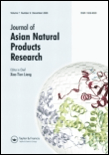
JOURNAL OF ASIAN NATURAL PRODUCTS RESEARCH
Exploring the Essence of Asian Natural InnovationsJOURNAL OF ASIAN NATURAL PRODUCTS RESEARCH is a prestigious publication in the field of natural products, focusing on valuable research spanning analytical chemistry, pharmacology, and complementary medicine. Published by Taylor & Francis Ltd in the United Kingdom, this journal has established itself as a key resource for academics and professionals seeking to explore advancements in drug discovery and organic chemistry. With a converged publication timeline from 1998 to 2024, the journal boasts several commendable category quartiles as of 2023, reflecting its robust standing in the research community: Q2 in Complementary and Alternative Medicine, Q3 in multiple domains including Analytical Chemistry and Organic Chemistry, and Q4 in Molecular Medicine. Although it currently does not offer open access, the journal remains a valuable compendium for empirical research and innovative studies in areas such as pharmacology and medicinal chemistry. Researchers, professionals, and students alike will find the JOURNAL OF ASIAN NATURAL PRODUCTS RESEARCH to be an essential platform for sharing groundbreaking findings and fostering collaborations that lead to significant advancements in science and health.

Anti-Cancer Agents in Medicinal Chemistry
Driving breakthroughs in anti-cancer agent development.Anti-Cancer Agents in Medicinal Chemistry is a pivotal journal in the realm of cancer research, published by Bentham Science Publishers in the United Arab Emirates. With an ISSN of 1871-5206 and an E-ISSN of 1875-5992, this esteemed journal has been disseminating high-quality research since its inception in 2006, and is set to continue through 2024. The journal is categorized in the third quartile (Q3) across key areas including Cancer Research, Molecular Medicine, and Pharmacology, highlighting its essential role in providing valuable insights to the scientific community. Despite its open-access status being unspecified, researchers benefit from the rigorous peer-review process ensuring the publication of significant advancements. The journal ranks well within Scopus, particularly in the fields of Pharmacology and Cancer Research, which positions it as a notable resource for professionals, students, and researchers aiming to deepen their knowledge in anti-cancer strategies. Through its comprehensive scope, the journal aims to bridge the gap between medicinal chemistry and clinical applications, making it an indispensable tool for those dedicated to advancing cancer therapeutics.
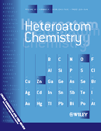
HETEROATOM CHEMISTRY
Transforming Research: The Essence of Heteroatom ChemistryHeteroatom Chemistry is a prominent open-access journal dedicated to advancing the field of heteroatom chemistry, with a particular focus on the chemistry of elements other than carbon in organic compounds. Published by Wiley-Hindawi, this journal provides researchers, professionals, and students with a platform to disseminate and access novel research findings related to the synthesis, properties, and applications of heteroatom-containing compounds. Since its inception in 1990 and gaining open access status in 2019, the journal has fostered academic collaboration and innovation throughout its converged years, although it currently holds a category quartile ranking of Q4 in Chemistry (miscellaneous) and ranks #319 out of 408 in general chemistry within Scopus. With its commitment to high-quality research and broad accessibility, Heteroatom Chemistry is poised to be an essential resource for anyone looking to explore the rich and varied applications of heteroatom chemistry in diverse scientific fields.
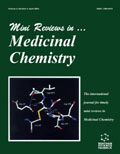
MINI-REVIEWS IN MEDICINAL CHEMISTRY
Exploring Innovations in Medicinal Chemistry.MINI-REVIEWS IN MEDICINAL CHEMISTRY is a distinguished journal published by Bentham Science Publishers, dedicated to the cutting-edge field of medicinal chemistry. With an ISSN of 1389-5575 and an E-ISSN of 1875-5607, this journal serves as an essential platform for researchers and professionals to disseminate concise yet comprehensive reviews that capture the latest advancements and trends in drug discovery, cancer research, pharmacology, and molecular medicine. Operating since 2001, it has consistently maintained a relevant presence in academia with its impressive rank metrics, including a Q2 category in Drug Discovery and Pharmacology in 2023, highlighting its significance in the scientific community. The journal is recognized for its rigorous peer-review process and provides an invaluable resource for students and researchers seeking insights into the rapidly evolving landscape of medicinal chemistry. With a commitment to excellence and innovation, MINI-REVIEWS IN MEDICINAL CHEMISTRY continues to foster knowledge exchange and inspire future breakthroughs in healthcare and therapeutic advancements.
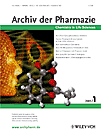
ARCHIV DER PHARMAZIE
Unveiling Breakthroughs in Drug Discovery and ScienceARCHIV DER PHARMAZIE is a prestigious journal published by WILEY-V C H VERLAG GMBH, dedicated to pioneering advances in the fields of Pharmaceutical Science and Drug Discovery. With an impactful history dating back to its inception in 1822, this journal is recognized for its significant contribution to the pharmaceutical sciences, maintaining an impressive Q2 ranking in both the Drug Discovery and Pharmaceutical Science categories as of 2023. The journal’s commitment to excellence is reflected in its Scopus rankings, placing it in the top tiers of relevant fields, ensuring a broad reach and impact among researchers and professionals. Although Open Access options are not available, ARCHIV DER PHARMAZIE continues to be an invaluable resource for scholars seeking to stay abreast of cutting-edge research and developments in pharmacy and related sciences. The journal’s contributions not only serve as crucial benchmarks in research but also enhance the understanding of pharmaceutical innovations, making it essential reading for both seasoned professionals and students alike.
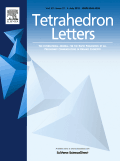
TETRAHEDRON LETTERS
Innovative Insights in Biochemistry and Organic ChemistryTETRAHEDRON LETTERS, published by Pergamon-Elsevier Science Ltd, is a leading journal in the fields of Biochemistry, Drug Discovery, and Organic Chemistry, with a rich legacy since its inception in 1959. This prestigious journal serves as a vital resource for researchers and professionals dedicated to advancing the understanding of chemical sciences, featuring high-impact research that influences both academic and practical applications. Although it is currently classified in the third quartile across its categories for 2023, its rigorous peer-review process ensures the publication of quality research that contributes to the scientific community. With an ISSN of 0040-4039 and an E-ISSN of 1873-3581, TETRAHEDRON LETTERS is easily accessible for those in the academic landscape seeking to stay abreast of innovative developments. Researchers, professionals, and students alike will find invaluable insights and collaborative opportunities within the pages of TETRAHEDRON LETTERS, making it an essential read for anyone involved in the chemical sciences.
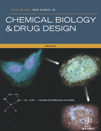
Chemical Biology & Drug Design
Innovating at the crossroads of science and therapeutic applications.Chemical Biology & Drug Design, an esteemed publication by WILEY, serves as a vital platform for the dissemination of pioneering research in the interdisciplinary fields of biochemistry, drug discovery, molecular medicine, organic chemistry, and pharmacology. With a dedicated commitment to advancing the understanding of chemical interactions and drug development, this journal not only fosters innovation but also bridges the gap between theoretical research and practical applications. It boasts an impressive impact factor and is recognized in the 2023 category quartiles as Q3 in Biochemistry and Molecular Medicine, and Q2 in Drug Discovery, Organic Chemistry, and Pharmacology, indicating its relevance and influence in these crucial areas. The journal’s rankings across various Scopus categories further solidify its position as a reputable resource for researchers, professionals, and students striving to stay at the forefront of medicinal chemistry and drug design. While primarily traditional access-based, the journal's evolving scope from 2006 to 2024 ensures an ongoing contribution to essential scientific dialogue, making it an indispensable read for those committed to advancing health sciences.

Fitoterapia
Championing Research in Natural TherapeuticsFitoterapia is a prestigious journal published by Elsevier that specializes in the fields of drug discovery and pharmacology. Established in 1948 and featuring a comprehensive scope that encompasses all aspects of medicinal plants and their derivatives, this journal is a critical resource for researchers, professionals, and students interested in the pharmacological effects of natural products. With an impressive impact factor reflected in its Q2 ranking in both Drug Discovery and Medicine as well as a Q3 ranking in Pharmacology, Fitoterapia plays a vital role in promoting innovative research in the intersection of traditional medicine and modern pharmacological science. The journal’s commitment to quality is further highlighted by its rankings in Scopus, where it holds a notable position among peers in its field. Although Fitoterapia does not currently offer Open Access, its reputation for rigor and relevance makes it an indispensable asset for anyone engaged in herbal medicine research and development. Authors and researchers seeking to publish groundbreaking findings will find a welcoming platform to disseminate their work in this influential journal.

European Journal of Medicinal Chemistry Reports
Bridging the gap between lab research and real-world applications.European Journal of Medicinal Chemistry Reports, published by ELSEVIER, is a vital platform dedicated to advancing the field of medicinal chemistry through open access communication of high-quality research. With an impact factor reflecting its growing influence, this journal has rapidly established a reputation for scholarly excellence since its launch in 2021. It serves as a converging point for innovative studies and reviews that span the disciplines of chemistry and molecular medicine, reflected in its Q2 and Q3 quartile rankings in relevant categories for 2023. Situated in France, the journal is accessible globally, ensuring that researchers, professionals, and students can easily engage with significant findings and methodologies in medicinal chemistry. The open access model facilitates the dissemination of knowledge, bridging gaps between laboratory research and practical applications in drug development. By fostering collaboration and highlighting emerging trends, the European Journal of Medicinal Chemistry Reports plays a crucial role in shaping the future of therapeutic innovations.

Future Medicinal Chemistry
Pioneering research for tomorrow's therapeutic breakthroughs.Future Medicinal Chemistry is a premier journal dedicated to the rapidly evolving fields of drug discovery, pharmacology, and molecular medicine. Published by Newlands Press Ltd in the United Kingdom, this journal has garnered significant attention within the academic community, evidenced by its 2023 category rankings in Scopus, placing it in the Q2 quartile for Drug Discovery and the Q3 quartiles for both Molecular Medicine and Pharmacology. With an ISSN of 1756-8919 and an E-ISSN of 1756-8927, Future Medicinal Chemistry has been a cornerstone of scholarly discourse since its inception in 2009, continuously contributing to the advancement of knowledge and discussion in medicinal chemistry. The journal is committed to publishing high-quality, peer-reviewed research that addresses the challenges and innovations in drug development and therapeutic strategies, making it an essential resource for researchers, professionals, and students seeking to stay at the forefront of these critical fields. Engage with the latest findings and methodologies that shape the future of medicine by exploring the wealth of information offered within Future Medicinal Chemistry.